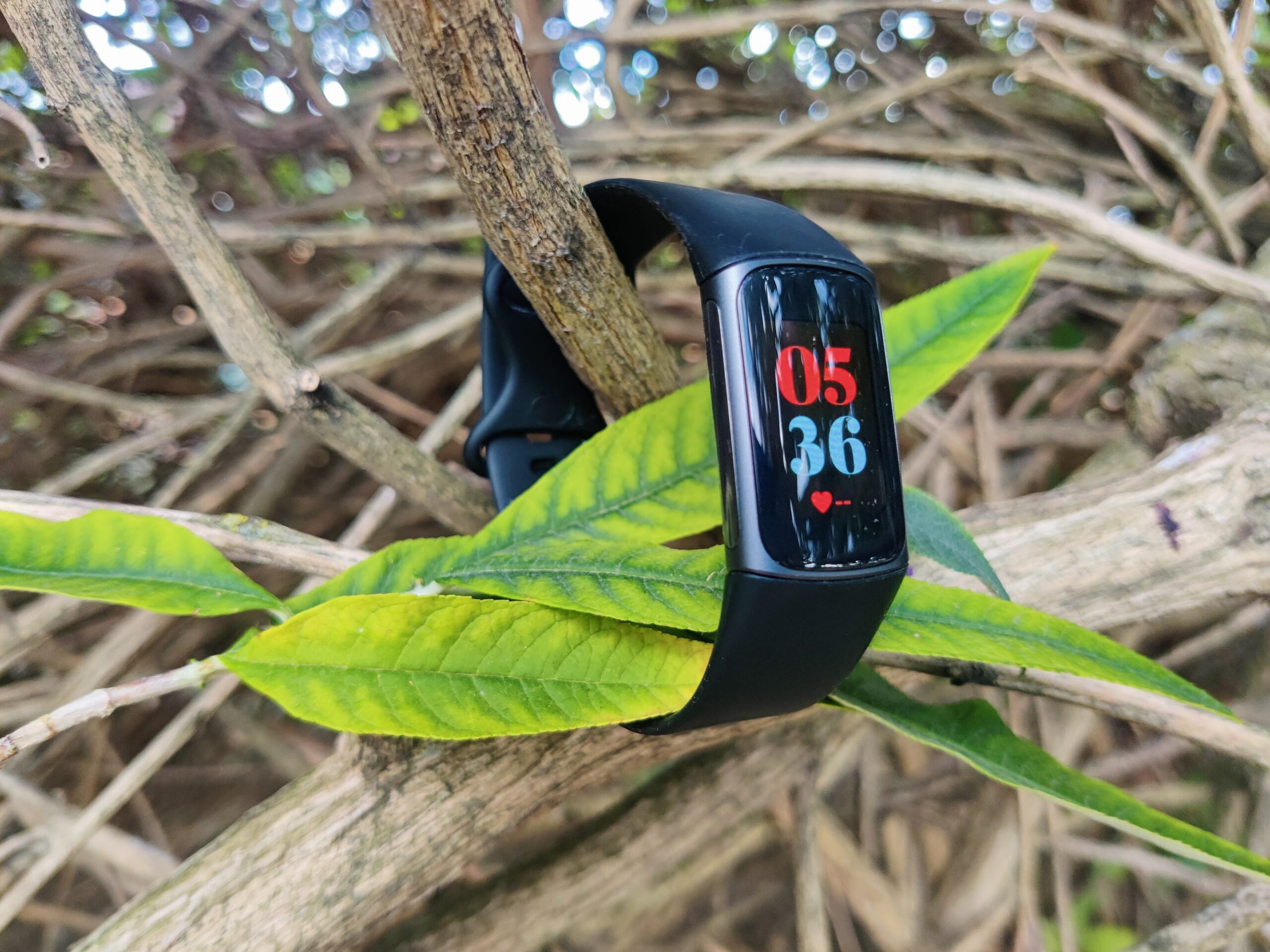Fitbit is the name that most people associate with fitness trackers. Hell, I’ve been asked “what kind of Fitbit” I’m wearing whilst rocking a Garmin on my wrist. And although the company has broadened its offering to include smartwatches, smart scales and whatnot, Fitbit still remains a fitness tracker brand at heart.
But how well does it track the kind of fitness that involves lifting a heavy thing and putting it back down again?
In this review I look at their latest flagship tracker, the Fitbit Charge 5, with a focus on strength training and an active lifestyle.
Get the Fitbit Charge 5: Amazon US | Amazon UK
Good
- Sleek, attractive design
- Tracks naps automatically
- Long battery life
- Wrist-based payments work well
Bad
- No weight training-specific features
- The software is a mess
- GPS can be glitchy
- No music support
- HR sensor not accurate for strength training
Table of Contents
- Design and Build
- Display and User Interface
- Health & Fitness tracking
- Software & Fitbit App
- Strength training
- Sensor accuracy
- Sleep tracking
- Smart features
- Battery
- Pricing
- Verdict
Design and Build
The Fitbit Charge 5 is a small, elongated tracker made of aluminium, glass, and resin. It connects to a strap on either end that snaps in using a proprietary mechanism. It comes in black, beige and white/blue, and you can buy a few more straps from Fitbit and third-party manufacturers.
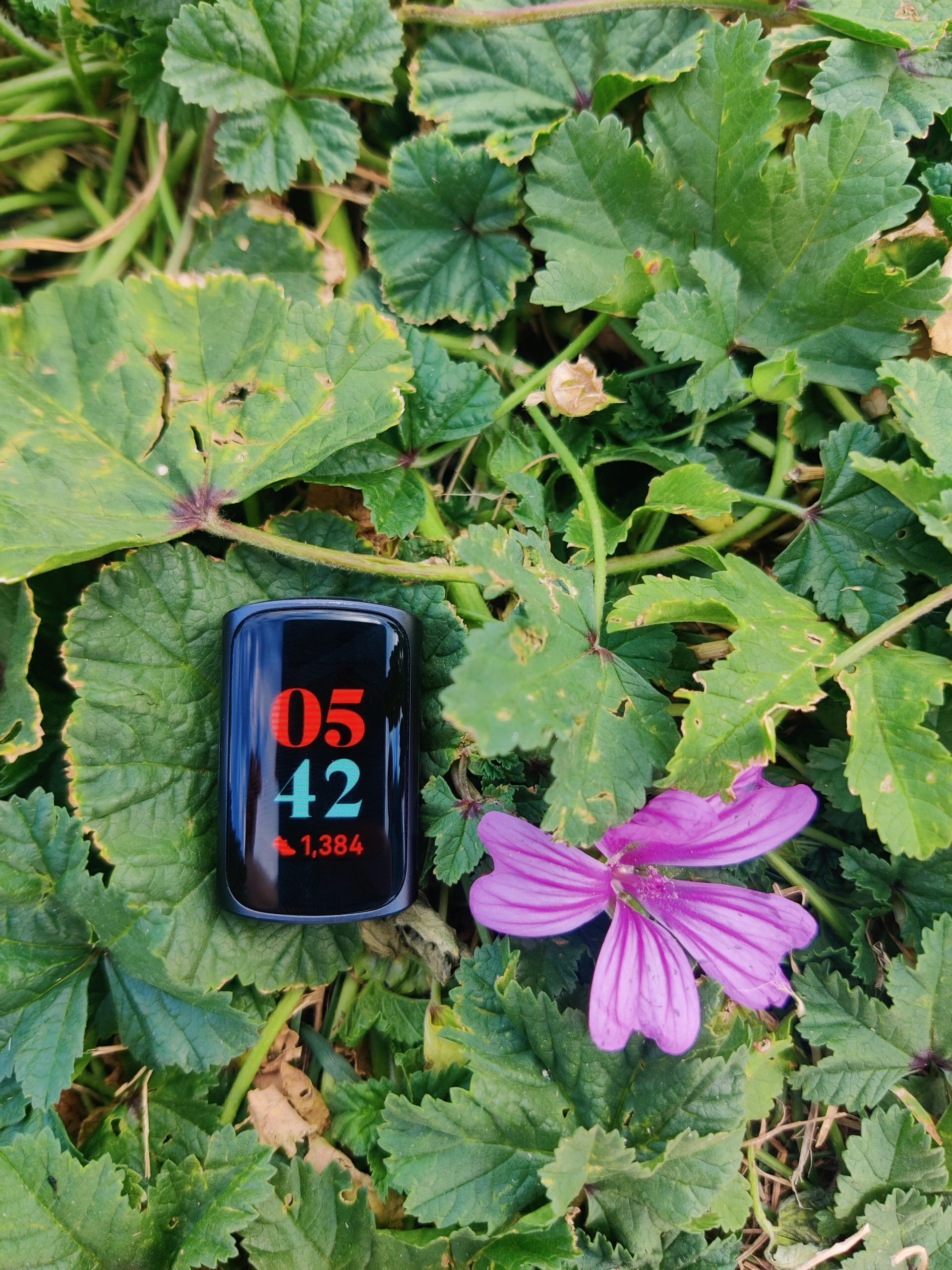
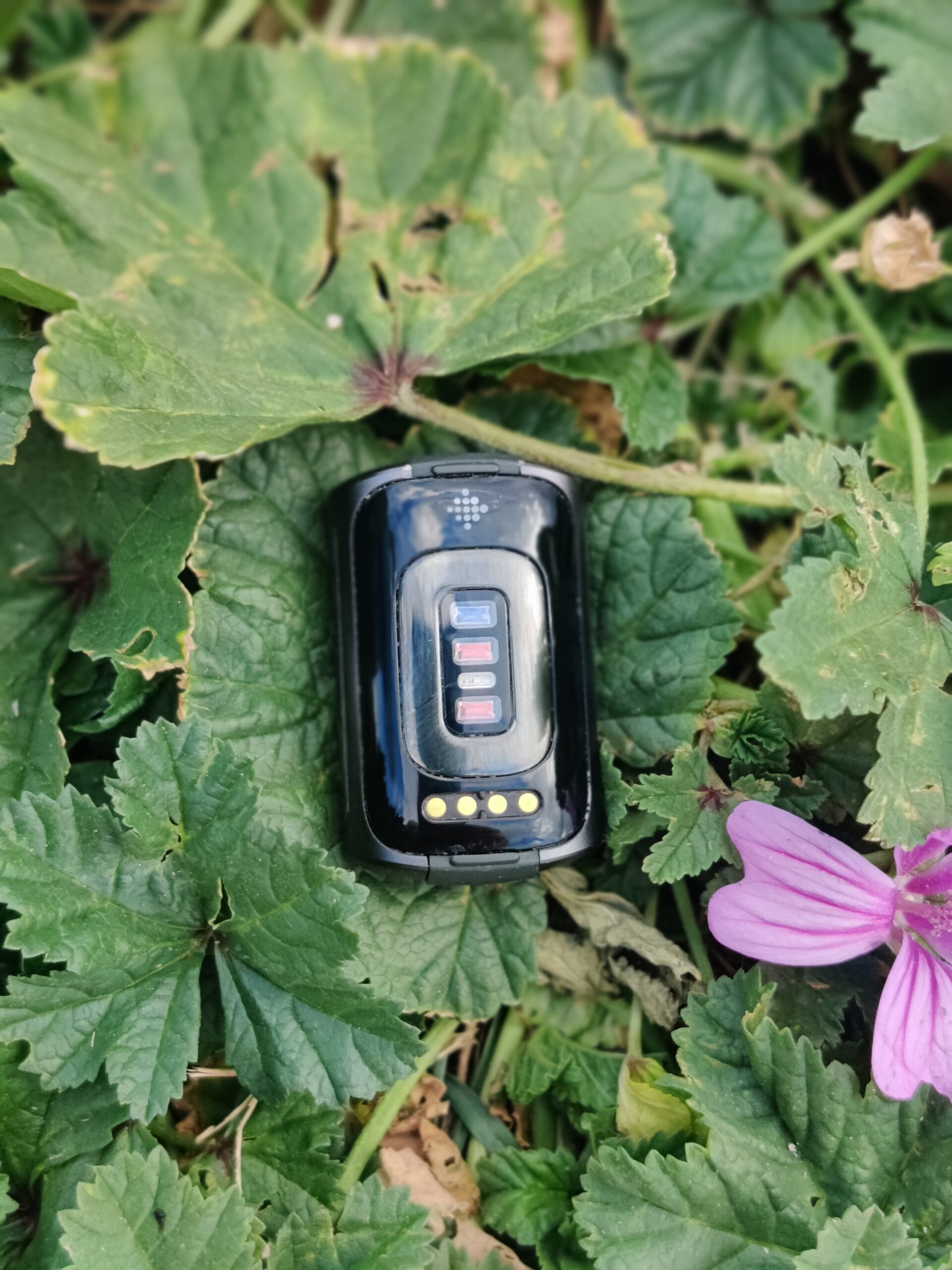
I have the black unit which came with the “Infinity band”: a stylish silicone strap that’s comfortable and convenient.
The tracker has no physical buttons, all interaction is done using the touchscreen. There are two metallic strips on either side of the device, these are there for taking electrical readings and are not used for navigation.
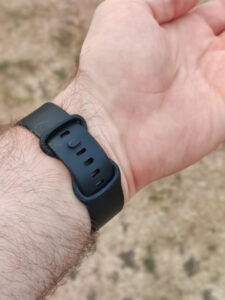
The build quality feels very polished but not particularly sturdy. Case in point: I accidentally bumped (lightly) the Charge 5 against a brick wall, and while the screen saw no scratches, the top bezel did show a bit of cosmetic damage. This is not a huge surprise but it makes the tracker a little less practical than some of the competition, such as the Garmin Vivosmart 5 which is more protected by a replaceable silicone strap.
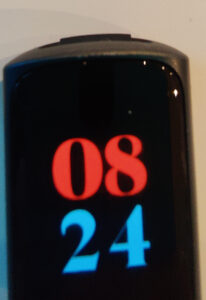
Overall I think the Charge 5 looks exceptionally sleek and stylish, and I’m happy to wear it day to day with pretty much any outfit. However, best try not to bump it into anything.
Display and User Interface
The centerpiece of the Charge 5 is its full-colour, 1.04-inch AMOLED display. It is nice to look at and easy to see both indoors and out.
You can set it to either always-on, which will eat into your battery, or stick to the default mode where it only wakes up if you tap it or bring the wrist up to that classic watch reading position. The gesture recognition is, in my experience, not great. It works maybe about half of the time; quite often I was raising my hand up and down repeatedly like a dweeb and ended up just tapping it instead.
Speaking of tapping, the touch responsiveness is okay, but not great. I found that I need to be more intentional and slower than I was expecting with my taps & swipes, otherwise the Charge 5 just refused to register any input. I’m sure I’d get used to it, but it’s worth pointing out.
The user interface is fairly intuitive: swipe left or right for apps (which let you track something), up for stats (which show you information), and down for settings and toggles (which let you configure your tracker). I only have one complaint here, which is that due to the slow responsiveness of the screen, it can take quite a while to swipe through your apps and start a workout. Not a biggie but can get annoying over time.
Health & Fitness tracking
The Fitbit Charge 5 comes with a heart rate sensor, a blood oxygen saturation sensor, an accelerometer and a GPS receiver built in. It uses this suite of sensors to give you both the directly measured values as well as higher level metrics like HR zone minutes, daily step count and a “daily readiness score” (more on it below).
You can also set goals for various activity metrics. What’s interesting about these is that there can be more than one “granularity” goal per activity type. For example, you can set a daily step goal (default is 10k), but on top of that the Charge 5 will nudge you to have at least 9 hours a day with 250 steps taken each hour. Similarly it will remind you to do a workout at least 5 days a week.
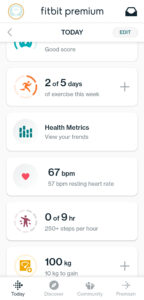
The daily readiness score (a Premium feature) is Fitbit’s estimate of how much energy you have left in the tank. It computes it by looking at your recent activity, HR and sleep data. I personally haven’t found this very useful as my body can, you know, feel it if it’s tired. That said, I can see how it can be a useful tool to nudge you to either be active or take it easy when your mental state can’t be trusted for whatever reason.
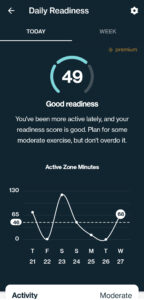
One thing that the Charge 5 does not track is floors climbed, as it lacks the necessary altimiter for that. I find this feature very useful in everyday life, so the exclusion is a shame (especially as previous generations have included it).
Workout & Activity tracking
The Charge 5 can track 21 types of exercise. This includes basics like running, walking and weightlifting, but also has some more specialised ones like tennis & golf.
This might sound like a lot, but in reality these are all pretty much the same activity profile with a different name (and potentially a different calorie calculation algorithm, but I can’t verify that). If an activity you want to track is not on the list, you can sort of log it by using the generic “Workout” profile and renaming it in the app later.
A few types of activities, such as walking, running and cycling, can be tracked automatically. You can configure which activities and their time-to-trigger on the app. I found that it recognised walks very reliably. There doesn’t seem to be any option to enable GPS for auto-tracked activities.
ECG and EDA
Two of the more advanced metrics that the Charge 5 offers are an ECG (electrocardiogram) reading, as well as an EDA (electrodermal activity) scan. The ECG scan is built to detect atrial fibrillation, while EDA should tell you (roughly) how stressed you are.
It is very difficult to comment on their accuracy because afib is a very rare event and I have no idea what the baseline EDA should be. All of my ECG scans showed normal rhythm or were inconclusive.
That said, I’m quite happy that the ECG functionality is there because of the trend it reinforces: the more healtchare components we can transfer out of hospitals and into people’s everyday lives, the better the outcomes overall should be.
Software & Fitbit App
Just like pretty much every other tracker on the market, the Charge 5 requires a companion app on your phone to run properly. In this case it is the Fitbit app, available for iPhone and Android.
The onboarding experience on the app is quite a mess. Every section you open shows you one or a few pop-ups with some guidance on how to use that particular functionality, which quickly became overwhelming. When it’s not tips & guidance, it’s section-specific terms and conditions or a privacy policy that you have to accept. Seriously, the number of separate privacy policies I accepted felt kinda uncomfortable.

After the setup things calm down a bit and the app structure is fairly straightforward. Your activities are grouped in days, and every day’s view contains a number of cards with some information. This can be steps, heart rate, sleep, a workout you did or a number of other things. Tapping into each will give you some more detail, and you can compare the current value agianst any goals you’ve set.
Premium subscription
One way that Fitbit differs from its competitors is the Premium subscription. It is an additional $10/month paid service that offers you some extra features compared to the “basic” Charge 5 offering. These roughly fall into three categories: insights, content, and challenges.

The Premium insights are additional metrics computed using your data that might be helpful in certain situations (e.g. the daily readiness score). Note that the underlying data is always availble for you to download whether or not you have a Premium subscription.
The extra content is things like video workouts and guided mindfulness sessions. Some of this comes from Fitbit themselves, but they also have a few partnerships with specialist content providers.
This can be good or bad depending on what you’re looking for. The different categories and partnerships mean that you have a bit of choice in workouts, but it can also feel like a patchwork of various things carelessly chucked together. It also felt disproportionately aimed at beginners.
Is it worth $10 a month? I’d say no. That said, a new Charge 5 often (depending on where you buy it) comes with Premium included for 6 months, so you can try it out and decide for yourself.
Community
The Fitbit app has its own internal social network under the Community tab. The way I understand it, you can connect with your friends and compare your fitness & activity markers, or join groups of various topics (some actual groups are running, hiking, strength training, or United Kingdom).
Fitbit says that users with friends connected on the app complete more steps and activity in general. While the causality is not established (do people become more active because they know their fitbit friends are watching, or do the most active people invite more fitbit friends to flex?), it does seem to make sense.
The groups are a different story. They often have thousands or even millions of members, and people still go on there to post personal, unremarkable shit. The heart rate graph of an unspecified workout? Up it goes! A picture from a hike? Let’s post it in the hiking group with no context! A picture of a raccoon from my garden? That’s something of interest for the 3 million Daily Activity group members!
It is really quite bizzare.
“What” moments
While most of the time the Charge 5 and the Fitbit app behave sort of as expected, every now and then they hit you with surprising shortcomings or just weird behaviour. I call these the “what” moments, because that’s what I often ended up shouting out loud.
- The Fitbit app includes an “app gallery” where you can download more apps. After trying it out and getting very confused, I found out this is possible in other Fitbit products but not the Charge 5. What?
- You cannot export the heart rate data of a weight training workout. In fact, you can only export heart rate data of a workout if you also had GPS tracked for it. WHAT?
- You can sort of work around this limitation by using Fitbit’s heart rate APIs, which obviously precludes most people from using it1. Also, the APIs do not export the last minute of every 24h period so that data is just lost. WHAT?
- Even though the Charge 5 pairs with your app using Bluetooth, you need to have location enabled on your phone to sync with the tracker. WHAT?
- Some features on the tracker itself are quite unreliable. The ECG reading was refusing to start for the first couple of days after setting up the Charge 5, and then started working without any explanation. The “find my phone” function works almost never. When my phone does make a sound it’s this abrupt 1999 sounding MIDI tone that cuts out after a second.
- The Premium section includes a “recipe inspiration” feature. These are short, 1 min videos showing various foods being made fom scrath. None of these include any detailed ingredients information, just what you see in the video. Now, some of these are simple things like smoothies which don’t need much more detail than that, but it also includes various breads and muffins which you can’t just wing with approximate ratios. This makes the feature mostly quite useless.
- The Premium subscription includes this video workout series called StrongWill. The workouts seem to have no relation to each other except for the fact that they all mention Will Smith in some weirdly forced-sounding way (e.g. “Like Will Smith says, let’s turn this furnace on!”), and the fact that every one of them is presented by, you guessed it, not Will Smith. What?
Strength training
The Fitbit Charge 5 comes with a Weights profile, which sounds good on the surface. However, all it does is track your heart rate and steps during the workout. There is no way to count reps or sets, specify exercises, or keep track of set time vs rest time.
Consequently, the Fitbit app only shows you basic workout stats like an HR plot, step count and calorie burn.
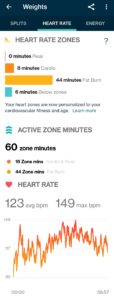
This means that the Charge 5 only works as a tool to log workout frequency & heart rate (more on that below), but you’d still need a different solution to keep track of what you’re doing. If you already have a solution for that, or if you’re one of those people who just wing it in the gym, a basic tracker might be all you want.
Sensor accuracy
GPS
During my time with the Fitbit Charge 5, I did a couple of walks and bike rides around town that I tracked with the GPS. It mostly worked decently well, but I did notice two effects:
- The GPS takes a while to lock on. This time seemed to improve a lot when I loosened the strap, but that (obviously) led to rubbish heart rate data. This is sort of in line with some other reviews.
- There was one instance where the GPS dropped off a couple of times. See image below.
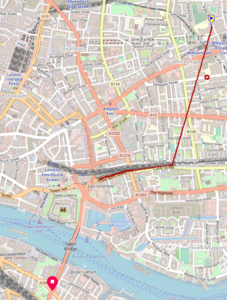
Heart Rate
Like most wrist-based trackers out there, the Charge 5 comes with an optical heart rate sensor. For everyday use it works alright, tracking modest HR changes as you walk around, climb stairs etc. This is a strength training blog, however, so let’s look at the HR sensor performance at the gym.
I’ve done a bunch of workouts with the Charge 5 and a chest strap for comparison, and have noticed a few trends in the sensor behaviour.
Firstly, it is not very good at picking up rapid changes in heart rate. This is especially true for increases beyond about 140 bpm, where the Charge 5 seems to give up completely.
To be fair, quite a few wrist-based optical sensors seem to miss spikes, although often not as badly as this. It is still a bit of a shame because a strength training workout is pretty much a series of HR spikes.
Secondly, sometimes the Charge 5 will get confused by a rapid HR jump and will instead interpret it as a drop. It happened quite regularly and on a broad range of movements.
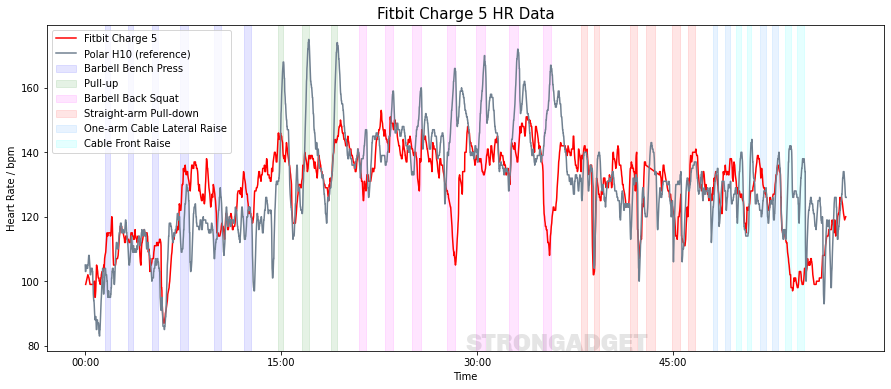
Thirdly, after it “lets the beat drop” (I do apologise), it occasionally will not catch up again and be just off for quite a while.
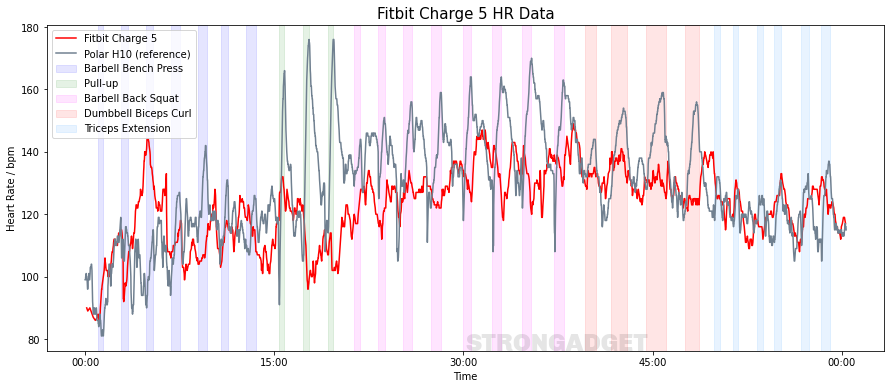
Finally, it seemed to have the hardest time keeping up when there’s a lot of tension on the hand / wrist. Pull-ups, deadlifts, rows, push-ups etc.
That’s all to say, the HR sensor isn’t very reliable for strength training, in my experience more so than the competition.
Sleep tracking
Like most activity trackers out there, this one also tracks your sleep. In particular, you can see the total time slept, time in different sleep phases, a short explanation of what each phase is, as well as an overall “sleep score” from 0 to 100.
I generally found that the Charge 5 recognised sleep & wake times quite accurately, but it seemed a bit too keen on logging me as awake many times over the night, thus shortening my total sleep time & score. There were days when I felt perfectly well rested both in the morning and throughout the day, but the Fitbit told me I’d had a rough night.
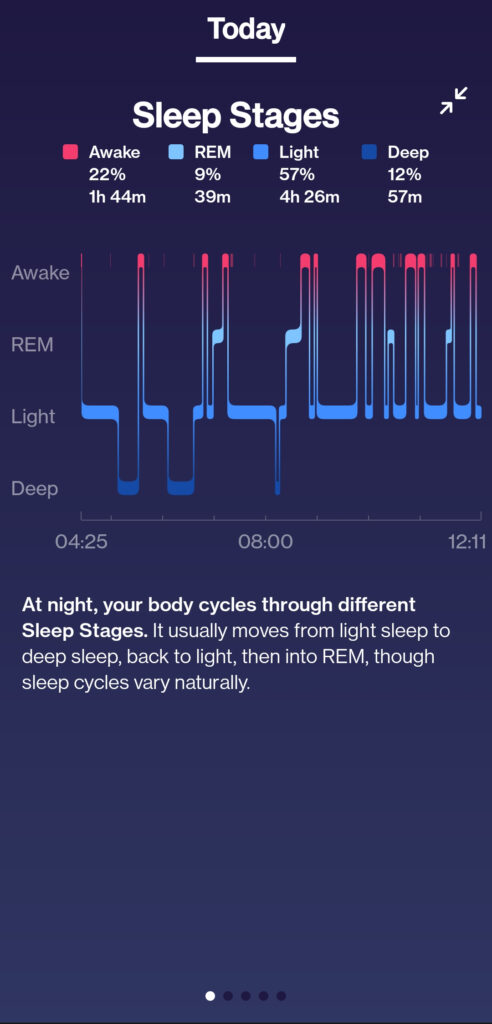
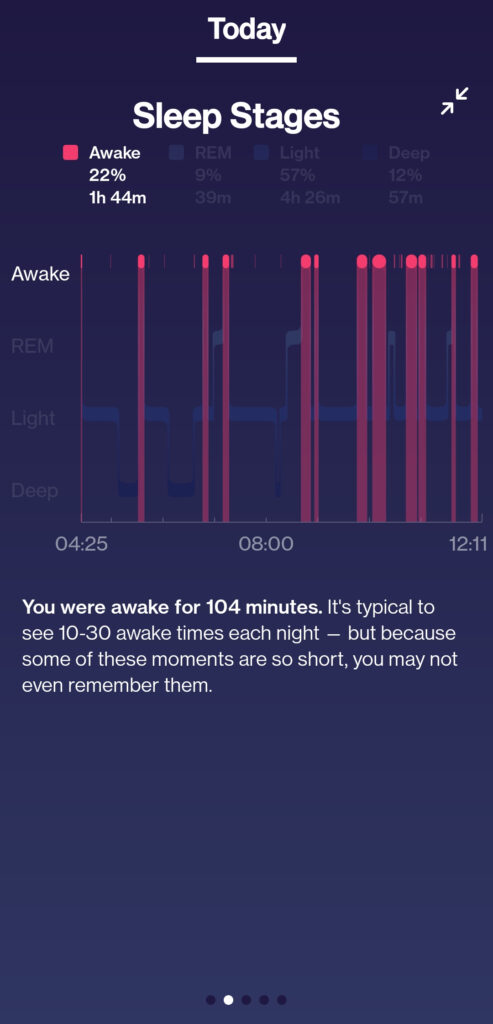
What I really like about the Charge 5 is that it tracks naps automatically. I don’t have to configure or enable anything; I just doze off for an hour, and it will recognise what’s going on and add the time to my total sleep for the day. This is something I haven’t seen many other brands do.
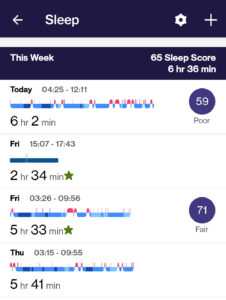
Smart features
Athough branded as a fitness tracker and not a smartwatch, the Fitbit Charge 5 does come with a couple of “smart” features, namey notifications and payments.
By default, you can access all notificaitons on the Charge 5 by swiping left. Each new notification also should show up on the screen as they come unless you’re currently in an activity. TODO clarify. If you’re on an Android phone, you can also reply to messages with canned responses.
In my experience, the Charge 5 does receive notifications but it’s a little spotty. I wouldn’t be surprised if it has a lot to do with how much your particualar phone allows the Fitbit app to receive notifications in the first place, so your experience might differ. I found that it showed notifications for incoming calls very reliably, text messages (SMS or a messaging app) most of the time, and emails pretty much never (even though I do get the email notifications on my phone). When I open my Gmail app however, my wrist starts buzzing and keeps going until it’s notified me of all emails received since the last time I opened the app. Silly.
Fitbit Pay allows you to use your wrist at any contactless payment terminal that supports it. Since Fitbit was acquired by Google recently, I expected the payments to just connect to Google Pay, however you do actually have to enter card details separately. I’m largely on board with this (the less data you feed to Google the better) however it does mean you should check if your card is supported. My experience was very smooth and payments were accepted every time I tried.
You do have to set up a PIN and enter it every now and then for security purposes. It’s a little awkward on the small screen but not too bad.
One unfortunately missing smart feature is any kind of music controls. When you’re working out it’s often convenient to be able to control audio directly from your wrist, but with the Charge 5 you have to reach for your phone or invest in fancy headphones instead.
Battery
Fitbut advertises up to 7-day battery life with the Charge 5, and my in my testing it fell braodly in that ballpark. Obviously your mileage will vary depending on how & how much you use it. I do a couple of workouts a week (most without GPS), have walk auto-tracking turned on, always-on display off, and take an ECG reading out of interest a few times a week.
Charging is reasonably convenient with a simple, magnetic, if a little finnicky, charging pod. Zero to full takes a bit longer than a shower in my experience.
Pricing
The Fitbit Charge 5 comes in at a base price of $149.95 / €149.95 / £129.99. However, it is often discounted so you might pay less than that. Links for current pricing: Amazon US | Amazon UK
Verdict
The fundamental question that I kept asking myself during my time with the Fitbit Charge 5 was “who is this for?”. The interface is simple to navigate if you only require basic functionality, but gets convoluted for more advanced uses such as exporting HR data. The sports profiles (weights in particular) have no specialised features, and the software only gets opinionated about the fact that you shold move regularly and consistently. HR data is too unreliable for gym use, GPS can be a bit finicky. The paid Premium subscription has mostly beginner-focused content and offers extra metrics such as daily readiness that competitors offer at no additional cost.
Given that, I believe that the Charge 5 is only a reasonable choice for people who struggle with fitness and want to be a bit more active. If you want a helpful tool for resistance training, I would recommend you skip this one and take a look at the competition instead.
In this price category, the Garmin Vivosmart 5 I reviewed recently has more weight training focused features, a slightly more reliable HR sensor and offers full functionality without a paid subscription.
Stay strong,
Ansis
1 Some nice soul has written a user-friendly layer on top of the APIs called PulseWatch.
